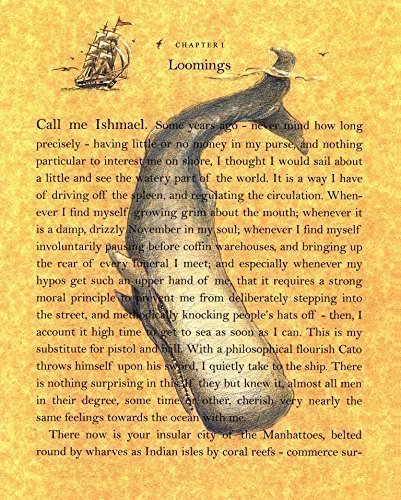Guest Blogger and long-time Council friend, Bob W. presents Part 23 of a series dealing with Alcoholism and Addiction from a Mystical, Mythological Perspective, reflecting Bob’s scholarly work as a Ph.D. in mythological studies.
 In the beginning of Herman Melville’s classic, Moby-Dick, Ishmael is in an aimless, anxiety-ridden state and decides to go to sea on a whaling vessel out of Nantucket. He befriends a Polynesian harpooner, Queequeg, who possesses enormous strength and ability and a simple but poignant view of life. Together they choose to sail on the Pequod, a classic and strangely adorned whaling craft. The name, Pequod, is from an actual tribe of “celebrated Massachusetts Indians,” a tribe that was particularly aggressive, and which the Massachusetts Bay Colony tried to eradicate in 1537 in the first instance of genocide in the Old World’s colonization of the Americas.
In the beginning of Herman Melville’s classic, Moby-Dick, Ishmael is in an aimless, anxiety-ridden state and decides to go to sea on a whaling vessel out of Nantucket. He befriends a Polynesian harpooner, Queequeg, who possesses enormous strength and ability and a simple but poignant view of life. Together they choose to sail on the Pequod, a classic and strangely adorned whaling craft. The name, Pequod, is from an actual tribe of “celebrated Massachusetts Indians,” a tribe that was particularly aggressive, and which the Massachusetts Bay Colony tried to eradicate in 1537 in the first instance of genocide in the Old World’s colonization of the Americas.
Melville’s tale is enormously rich with analogous and symbolic imagery and character development. The white whale Moby Dick; the Pequod’s Captain Ahab and the Mates, Starbuck, Stubb and Flask; the native Harpooners Queequeg, Tastigo, and Dragoo; and the various other seamen form a marvelous ecosystem of characters operating in an unusual aggregation of events. The central story is that Ahab, having been seriously maimed by the albino white whale known as Moby Dick, has become obsessed with the need to hunt and kill the animal to validate his own existence as a whaling captain extraordinaire. He hijacks the Pequod from its normal commercial whaling mission and pursues Moby Dick around the known oceanic world of the time, only to be killed himself along with most of this men, and the Pequod sunk, in the final confrontation with the whale.
The story is told in the first person, with Ishmael as the narrator. In effect, it is his journey that provides a wonderful vision for us…through the terrors of the whaling excursions and the final battles with Moby Dick to the miracle of his sole survival. His decision to go to sea is the symbolic initiation of the process of recovery. His experiences in the interactions with the Pequod crew, in the hunting and killing of whales, and in the horrific final battles with Moby Dick parallel our own journeys though the early process of recovery. The story might also be seen, perhaps, as a Melvillian exposition of the world of 19th century commercialism run amok…in the slaughter and pillage of such magnificent creatures as whales.
Ishmael’s survival, the sole survivor of the disastrous final battle with Moby Dick, is a great culmination to the story, even to the extent that he is the only one to survive, the only one to tell the tale. He has survived, coming back to tell the story, to bear witness to the world of the terrors of rampant commercialism. For us, the parallel is our survival to tell the story of our lives in our disease. There is some belief that much of this book, Melville’s story, is based on Melville’s own life, on his life and beliefs. That he may be Ishmael and that the story is Ishmael surviving to tell his story is the ultimate image for all of us. It tells all of us that, in our search for a life in Sobriety, the finality must always be the complete embrace of the 12th Step, that of passing on the Story.
